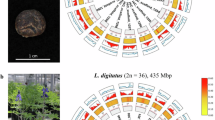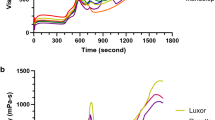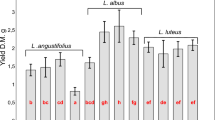Abstract
THE Western Australian blue lupin, which has been variously referred to in the literature as Lupinus pilosus L.1,2, L. varius L.3 and L. digitatus Forsk4, occurs as a naturalized exotic in west coastal areas of south-western Australia where the annual rainfall exceeds about 16 in. It grows prolifically on coastal sandy soils overlying limestone, and is also cultivated to some extent in adjacent inland areas on slightly acid sands for soil improvement and sheep feed.
This is a preview of subscription content, access via your institution
Access options
Subscribe to this journal
Receive 51 print issues and online access
$199.00 per year
only $3.90 per issue
Buy this article
- Purchase on SpringerLink
- Instant access to full article PDF
Prices may be subject to local taxes which are calculated during checkout
Similar content being viewed by others
References
Gardner, C. A., and Elliott, H. G., J. Dep. Agric. West Austral., (2), 6, 414 (1929).
Black, J. M., Flora of South Australia, 2nd ed., 2, 449 (1948).
Gardner, C. A., and Bennetts, H. W., The Toxic Plants of Western Austalia (West Australian Newspapers Ltd., Perth, 1956).
Gladstones, J. S., J. Roy. Soc. West Austral., 41, 29 (1958).
Hackbarth, J., J. Austral. Inst. Agric. Sci., 27, 61 (1961).
Sengbusch, R. von, Züchter, 2, 1 (1930).
Gladstones, J. S., Austral. J. Agric. Res., 9, 473 (1958).
Schreibe, A., and Hülsmann, G., Z. Pflanzenz., 39, 299 (1958).
Author information
Authors and Affiliations
Rights and permissions
About this article
Cite this article
GLADSTONES, J., FRANCIS, C. Low-alkaloid Mutants of Lupinus digitatus Forsk. Nature 207, 553–554 (1965). https://doi.org/10.1038/207553a0
Published:
Issue date:
DOI: https://doi.org/10.1038/207553a0



